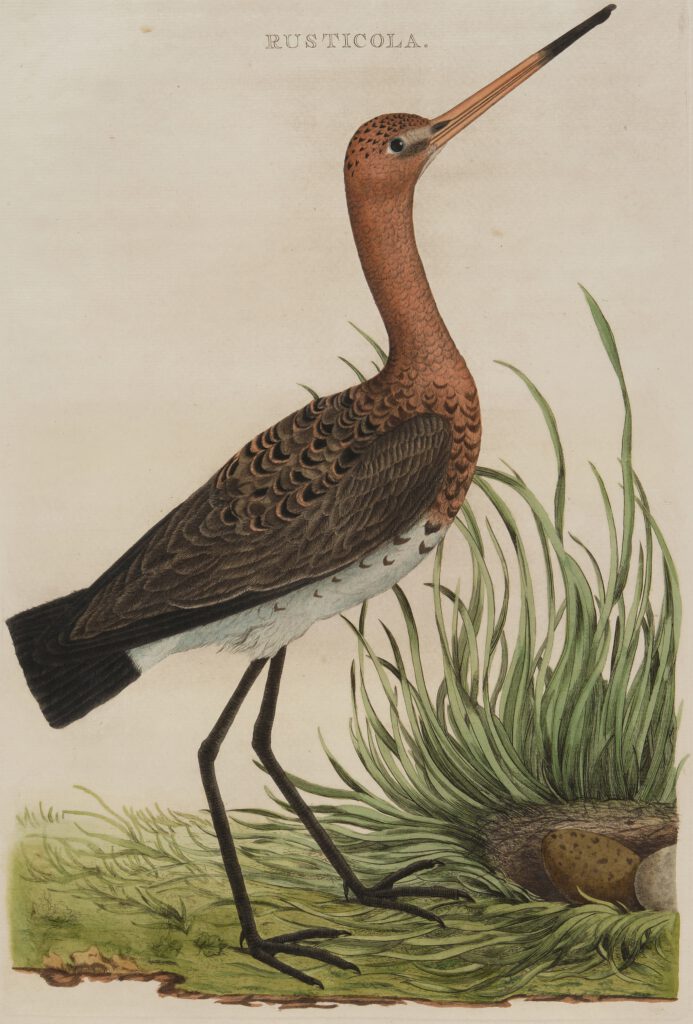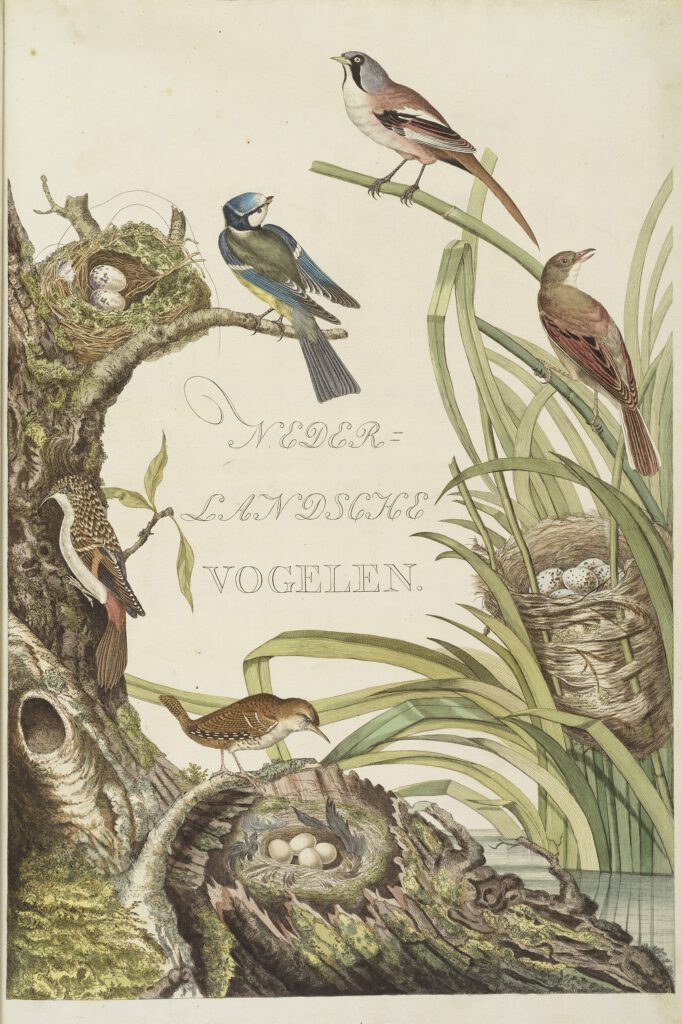“The eggs are as delicious as those of the lapwing and the godwit itself is a delicacy”
De Eijeren zyn zoo goed als die der Kievit, en de GRUTTO’S zelf zyn eene lekkerny. In English: ‘The eggs are as delicious as those of the lapwing and the godwit itself is a delicacy.’ From: Nederlandsche vogelen volgens hunne huishouding, aert en eigenschappen beschreeven / Cornelis Nozeman 1720-1786, Christiaan Sepp ca. 1720-1775, en anderen. Print Book, 1770-1829, gedrukt te Amsterdam, gedrukt door Jan Christiaan Sepp, 1770-1829.
The digital version of this book is available at the Koninklijke Bibliotheek.
Until 1750, the field of natural history in the Netherlands was mainly concerned with nature in the overseas territories, the Dutch colonies. From 1750 onwards, however, more attention was given to nature in the Netherlands. Pastor Nozeman, a naturalist with a great interest in birds, joined forces with the publisher Christiaan Sepp, who himself was also a great nature lover and expert. In 1770, they jointly published the first issue of Nederlandsche Vogelen (‘The Birds of the Netherlands’), a loose-leaf publication that described the breeding birds of the Netherlands and Belgium.
More than 200 bird species would eventually be described in the five separately bound volumes. The publications did not only include exceptionally beautiful illustrations, but also described the habitats, feeding habits and behaviour of the birds in great detail.


Nozeman headed into the wilds himself to observe the birds and also paid careful attention to their nests and eggs. This close attention to nests and eggs was not without reason: according to Nozeman, the nests proved that the birds were native to the Netherlands. He also described how humans could benefit from these birds. Unlike later periods in natural science, at the time, nature was still considered to be subservient to humankind. And so he provided detailed instructions on how to control bird species that were considered to cause a nuisance, and also regularly mentioned how a particular bird and its eggs taste. See for example the description of the godwit: ‘The eggs are as delicious as those of the lapwing and the godwit itself is a delicacy.’